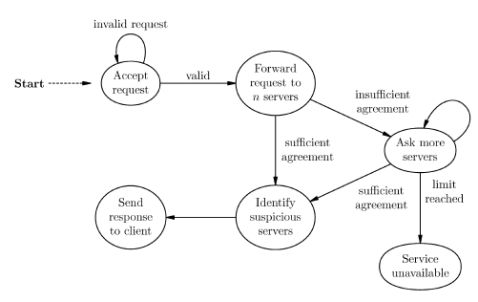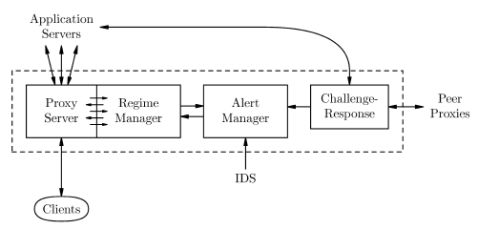张五常 思想要从一片空白起笔
2006-03-09 17:16:49
老师艾智仁给我最大的影响,是他永远像一个天真小孩那样看问题。当年同学们都听说他是理论高人,智商不凡,但五十岁了,对任何问题彷佛一个小孩子第一次看世界,给我有难以形容的感染力。教功用,他问:什么是功用?教货币,他问:什么是货币?问他一篇大名鼎鼎的关于产出函数的文章,他问:你相信文章里说的吗?这种教育方法之前之后我没有见过。
那时艾师在行内有名,但不像十多年后那样举世知名。我推迟博士课程一年,只为了等艾师从他造访的史坦福回到加大,先听他的课,才考他出的博士理论试题。于今回顾,那是我在经济学习过程中作出的最好一项决定。这决定不是受到同学的影响,而是两个其它原因。其一是一九六二年,麻省理工的森穆逊到我就读的加大演讲。没有谁不知道森氏是当时最负盛名的经济理论家。演讲后一位同学举手提问,森氏说:「让我教你一点价格理论吧。」跟着停下来,游目四顾,说:「对不起,在你们这里我不敢教价格理论!」举座哗然。大家都知道,他的意思是我们有一个艾智仁,而当时艾师不在座。第二个原因,是我拜读过艾师于一九五○年发表的《风险、进化与经济理论》,精妙绝伦,深不可测,于是五体投地,非拜他为师不可。
后来成为艾师的入室弟子。每次入室求教,他总像小孩子般看我提出的问题,次次如是,影响了我对学问的处理方法。说像小孩子般看问题,其实是说从一片空白开始想;之前想过的,再想,也是从一片空白起笔,丝毫传统的成见也没有,自己此前的观点一概不管。朋友,你可以做到吗?如果可以,那么你不是天才也算是准天才了。天才其实就是那样简单的一回事。如果有成见的约束,摆脱不了前人之见,算你智商顶级,思想不可能传世。如果你的智商只是一般,受到成见的约束就会升级为蠢才了。
不要误会,我不是说传统之见什么用处也没有。正相反,我是个尊重传统的人,以经济学为例,我对传统的理论学得通透。然而,尊重传统,熟习传统,接受传统的影响,不等于受到成见的约束或左右。所有的人说这样想才对,你怎样想呢?如果所有的人这样想你就一定要跟着这样想,你就是蠢才。如果所有的人都这样想,你对自己说:知道,但要重新考虑,不认为所有人说对就是对,说错就是错,衡量一下再算,可用的采用,认为不对就不管。这是毫无成见约束的思考,说是天才庶几近矣。
毫无成见约束的思考方法,简言之,是从一片空白起笔,认为传统可用的放进去,不可用的撇开来,然后加进一些自己的。推理逻辑不能错,小心一点就成,推到哪里就哪里。既然自己毫无成见,推出可以传世的新观点的机会是不低的。
我是从艾师那里学会了从一片空白起笔的思考方法的。当年写论文《佃农理论》,在艾师与赫舒拉发的指导下,很有点不敢乱来。我想,边际产出定律是传统的,他们教过,自己怎样想也认为不可能错,要用。竞争的理念我从艾师学得的出自传统,但比传统的远为高明,也要用。成本的概念也是传统的,但不够一般化,改进一点,要用。这样,脑子一片空白,把这三项放进去,搓、搓、搓,砌、砌、砌,推出了自己的佃农理论。结论与传统的相反,是传统错了,而此错也,起于一个佃农「无效率」的成见。
博士论文是三十九年前的事。之后的文章行内朋友认为有新意,主要是因为历来的习惯,每逢考虑一个题材,事前很少研读他家之作,自己想自己的,分析有了结果才参考他人的。四十岁后懒得参考,把文稿写好后才找些有关的论着下注脚,点缀一下。文成后才查考,有时发觉己见与他家相近;很多时不同,但没有冲突;有时特别,己见与他家相反。谁对谁错不是那么重要,重要是找到了真理,而从一片空白想起,彷佛自己在大海飘浮,不知会飘到哪里去,对我来说,是做学问的乐趣所在。
有一个相当固定的规律。同一题材,凡是认为他家之见是错了的,细看之下,他们的见解通常是受了成见的约束。好比价格管制的分析,成见要不是说有短缺,就是说有剩余,不均衡,市场会有什么压力云云。三十三年前我考虑价格管制,这传统分析我当然耳熟能详,但轮到自己用脑,只一个晚上就认为不知所云。短缺、剩余、不均衡等理念皆非事实,看不见,捉不着,只有天晓得是些什么,自己不要这样想下去。于是从一片空白起,想出凡有价格管制必定有价格之外的其它准则定胜负,而这些其它准则会导致租值消散。只要知道哪种准则会被采用,要达到理论的均衡易如反掌。困难是如何推出哪种「其它准则」会被采用。这是个重点,我想了整整一年,直到一个晚上在梦中突然惊觉,传统的租值消散理论全盘错了!有应该消散的租值,不是为了要达到均衡而消散,而是在极大化的假设下,消散的租值是局限下最小的。这就让我们推出在价管之下什么其它准则会被采用,跟着的均衡分析是本科生的习作了。
提到这些,因为网上好些同学的言论,骤耳听来很不对头,为什么同学们会那样想呢?中国的青年怎会蠢得那样离奇?细想之下,同学们其实不蠢,也不是成见深不可拔,而是奇怪地他们往往把成见与己见混合起来,以致我这个老人家听得天旋地转。
告诉同学们吧。成见与新意是加不起来的,因为成见的本身是结论。比方说,佃农的传统成见是无效率,你不可以把农民勤奋耕耘加进去而分析得顺理成章。我们要尊重传统,因为与传统毫无关连的思维免不了怪诞不经,不可取。好些传统的观点或结论是好的,考虑之后我们乐意接受。不容许更改的观点是成见,但容许更改而不更改是另一回事。成见不可取,因为一把成见放进脑子里,就不能有一片空白的思想空间,正如一个画家用的画纸早就有人画上一只乌鸦,怎可以创出什么精彩之作来?
一个大有成就的画家需要很懂得传统的绘画技术,需要吸收众多前人画作的感染,也需要有自己的学问、创意与思维。但每次创作,他是要从一张空白的纸或布起笔的。
重视传统,但不受成见的约束;发挥己见,但要有学问与逻辑的支持。二者皆来得不易。我不怀疑中国青年的天赋了得,但智能这回事,大部分是后天学回来。北京天天在谈改革——这些日子他们推出的改革方案多得很。愚见以为,他们要把教育改革放在第一位置。
睡在图书馆的好日子
2004-05-25 09:05:20
一个美国纽约大学的清贫学生,交不起宿舍房租,偷睡图书馆八个月,被发现了,校方
没有处分,反而安排这学生免费住宿舍。这个有趣而又感人的故事,最近成为国际新闻。
是不同的年代了。当年作研究生,我在洛杉矶加州大学的图书馆断断续续地睡了两年多,不是偷睡,是光明正大的,而「睡馆」的同学还有其它两个。说断断续续,因为当时有自己的小公寓,交得起房租,只为了读书方便而选睡图书馆,不回到自己的公寓去。那时成积好,校方免了学费,作助理教员的月薪大约美元三百,找外快,替教授改卷每份一元,替学校运动员补习每小时五元。那是四十多年前,通胀之前的日子了。
那时大学的图书馆每天开二十四小时,每年开三百六十五天。作研究生的可以申请,在图书馆内拿得一个专用小室(称cubicle),在地上对角可以睡觉。小室内有书桌,桌上的墙有书架,小室有门,可上锁,外人不得闯进也。枱灯是自备的,也带了枕头、被铺、清洁用品之类,而重要的是一枝发热针。后者用于把罐头汤在数分钟内煮开,与饼干同吃大有奇趣。不是没有钱吃得较好的,而是懒得跑到外间吃汉堡包。
住在图书馆,可不是因为在地上睡觉有其过瘾之处,而是要读的书太多,借出搬回家,搬来搬去,很麻烦。看官要知道,图书馆内的书分类,先是一门学问分类,继而专题再分类。要研读一个小专题,可以一下子把所有有关的书籍搬进自己在图书馆内的小室,不用借出去的。馆内有小手推车,满载推进自己的小室,读后满载推到走廊,不须放回原来的书架上去。事实上,图书馆的管理禁止我这种大读客把书放回书架,因为可能弄错编排次序。有这样的服侍,图书馆乃天堂也。只有研究生,有教授推荐信的,才有这样的享受权利。
一天阅读十多本书,可以那样快吗?可以的,因为不是逐字逐句地读,而是随意地翻阅。百分之九十九以上的书都很无聊,毫无创意,多一本不多,少一本不少。问题是求学的人不多翻阅就无从作出判断。老师或同学津津乐道的重要读物,有口皆碑的,与自己所学有关当然要细读。但这个层面的作品,与自己攻读有关的,叠起来不到两英尺。其它很多很多的书,不被重视的,可能有一章半章值得细读,或其中可能提到一些事实,不知是真是假,与他书所载不同,对学问上的思考有助。偶尔碰到一本不见经传但自己认为是要读的,惊喜也。沧海遗珠不常有,但有这回事。当年翻阅群书,找新意,有大海捞针之感,但造学问,捞针总要捞一下。
今天才知道的意外收获,是当年睡在图书馆的日子,苦闷之余找了好些与自己读书考试无关的书籍看。什么鸦片战争、太平天国、明治维新、艺术历史、路易十四……都很有消闲价值。目过不忘,这些是我今天写专栏文章的本钱了。虽说不忘,其实忘了不少。历史的年份有时记错(不会大错,小错无伤大雅吧),而细节免不了有点出入。最难记的是人名与地名。不知何解,年轻时的记忆力,虽然朋友认为是奇异功能,永远记不起他人认为是容易记的人名与地名。我这个人对专用名词显然有抗拒感。
要从世界大同的角度做学问
2004-08-19 14:29:12
山木兄寄来他新出版的《闲读偶舍》,第一篇的名目是《嫉洋如仇鲁迅误打陈焕章》。鲁迅胸襟不阔,笔下磨斧痕迹甚重,而又鄙视像林语堂那种在西方介绍中国文化赚饭吃的学者。陈焕章以《孔门经济学原理》为题在美国写博士论文,鲁迅说陈氏「自己也觉得好笑」,其
轻薄态度有点那个,也有点葡萄是酸的味道。
陈焕章是一百年前到哥伦比亚大学攻读经济的。那个时代能到美国名校攻读的中国学子,不是天才也是才子。然而,从陈氏到我写博士论文的六十年间,留美中国学子的可以数得出的经济博士论文,绝大部分论中国,鬼子佬不容易判断真真假假。轮到我写博士论文,时代转变了,中国专家没有市场,而自己的主要兴趣是价格理论。我于是想,论文一定要以有一般性的理论为重心,中国的资料可以用,但千万不要因为文化背景不同而写得老师无从判断。后来写成的《佃农理论》,其理论有一般性,不分国界,虽然引证的资料大部分取自中国的农业与台湾的土地改革。今天这论文受到注意的只是理论那部分,而自己认为比理论更精彩的中国农业资料的分析,数十年来无人问津。这可见在学问上,无论怎样精彩,没有一般性或世界性的,在国际上不容易杀出重围。不单是只为中国而写中国引不起外人的兴趣,只为美国而写美国也有类同的命运。
自然科学,可取的发现都有一般性,没有国籍。社会科学(包括经济学)可以有「国籍」,但如果缺少了一般性,难以成家。历史学的国籍约束看来最大,要在国际上成家,若不能指出不同国家的共同历史规律,就要指出不同文化会导致不同的史实,而又能解释为什么史实不同。
「东是东,西是西,二者永不会合」这句名言老话,虽然不对,但如果是说东与西不容易会合,却没有错。今天的世界,做学问一定要把这二者会合起来——融合起来——才有希望论成就。这样看吧,融合东与西是当今做学问的必需条件,但不足够。有成就的学问,是把二者融合起来,然后表达一些不怪诞的新意。
不一定是近代的人才可以融合东方与西方而达到大成的。生于东而不知西,或生于西而不知东,但产出东、西大同的作品是有的。这些作者是天才了。唐初孙过庭写《书谱》,论书法,其艺术概念与今天的西方艺术观非常一致。十八世纪莫扎特写的西方音乐,今天的中国人喜欢听。这种人不学有术,只凭预感就打通了不同文化的贯通经脉,的确是天之骄子,令人羡慕。当然,艺术讲感情,而人与人之间的感情互通比较容易,但达到的还不多见。历史上,数之不尽的艺术作品,不同文化背景的人是不能共同欣赏的。不能共同欣赏的艺术不是好艺术,依稀地明白这哲理大约有二百年,一天比一天肯定,到今天一般的艺术家都明白,都同意。
在概念与感受上,视觉或听觉艺术是比较容易融合东方与西方的。要通过翻译的诗文就比较困难了。但如果你是今天的中国诗人,懂西语但对西方的诗毫无感受,你不可能是一个有成就的中国诗人。你可以因为天才横溢,不懂西语而成为一个伟大的中国诗人,但你不可以懂西语,毫不欣赏西方的诗,而在写诗上有可观的成就。如果你和我差不多,写诗的天赋不足但要在写诗的造诣上有点成就,那么中语西语皆通,中、西双方的诗皆读,融合起来,当可事半功倍。
不是低估董桥与陶杰这二君子的天赋,但我相当肯定,如果他们不是中西兼通,对西方文学有体会,他们的中语文字不可能达到我们读到的水平。这是融会东方与西方的文化的效果,是从世界大同的角度下笔了。
打通中、西融合的经脉,不容易,需要一段日子,而每个过了关的人会有不同的经历。
我自己的经历,是起头很困难。那是四十七年前,初到多伦多贵境。有两个障碍。其一是老生常谈的东是东,西是西,在脑子里自己划下界线。其二是在西洋鬼子面前不敢示弱,很有点要以炎黄子孙的文化把西洋鬼子的比下去的意识。于今回顾,正如鲁迅写陈焕章,「自己也觉得好笑」。
后来在多伦多遇到一位年纪比我略长的名叫王子春的朋友,其英语文采好得出奇,也有学问,不厌其烦地指导了我几个月,使我茅塞顿开。其后转到美国的洛杉矶,就读于该市的加大,屡遇大师指导,是四十五年前开始的了。
我感到自己完全中西不分,融合得通透,大概是进入加大后的第四年,即是在研究院的第二年,在西方生活了近六个年头了。从本科生起我选科选得杂,这有帮助。进入了研究院我索性住在图书馆乱读一通,不到两年就恍然而悟:原来地球上的学问都是一样,有好有不好,精彩的少胡说的多,而中国的学问,虽有可取,但一般不及西方。其中主要分别,是西方的学问佳作,在有深度的同时说得清楚。是在天天强逼自己想得清楚的日子中,我意识到学问就是学问,没有国界,而中国人做学问的一大缺失,是想得不够清楚。
炎黄子孙的文化传统的学问不是没有深度,而是喜欢吹毛求疵,数树木而不看森林,似乎永远拿不着重点。这种学问很容易故扮高深,把模糊看为深奥,不知为知之,不懂的往往盲目附从,坚持自己看到了皇帝的新衣。如果学问是从世界大同的角度看,没有国籍,做学问就逼着要看森林,而这样看,懂是懂,不懂是不懂,湛深的学问不会真的深不可测,那才算是走进了学问之门。高斯和我曾经说,我们怎样也不明白的经济理论,应该都是错的。
提到这些,起于我关心中国的青年。听到同学们给我提供的今天网页上的好些青年的言论,不以为然,认为他们在追求知识的重要路途上走错了方向。激情远超理智,不分客观与主观之别,不知道推理必须有假设,而又往往自以为是,不懂就以专家自居。只读过几本书,一知半解,就以为有了学问,以为知道真理。这是数树木的途径,过不久就会迷失在森林中。
在知识与理智的表达上,香港网页上的青年远胜国内的。求学的际遇不同,所以有别。我关心的是国内的青年。基因说,他们的天赋与香港的没有分别。只是香港的生长于一个国际都市,无论学与问,他们的世界大同的意识抢先了几个马位。还不能说是一般地达到世界大同的学问境界,但比国内的接近得多了。
从今天的世界看,有国籍的学问,皆非上品。
第二篇:张五常2
AnArchitectureforanAdaptiveIntrusion-TolerantServer??
AlfonsoValdes,MagnusAlmgren,StevenCheung,YvesDeswarte????,BrunoDutertre,JoshuaLevy,HassenSa¨?di,VictoriaStavridou,andTom′asE.Uribe
SystemDesignLaboratory,SRIInternational,333RavenswoodAve.,MenloPark,CA94025valdes@
Abstract.Wedescribeageneralarchitectureforintrusion-toleranten-terprisesystemsandtheimplementationofanintrusion-tolerantWebserverasaspeci?cinstance.Thearchitecturecomprisesfunctionallyre-dundantCOTSserversrunningondiverseoperatingsystemsandplat-forms,hardenedintrusion-toleranceproxiesthatmediateclientrequestsandverifythebehaviorofserversandotherproxies,andmonitoringandalertmanagementcomponentsbasedontheEMERALDintrusion-detectionframework.Integrityandavailabilityaremaintainedbydy-namicallyadaptingthesystemcon?gurationinresponsetointrusionsorotherfaults.Thedynamiccon?gurationspeci?estheserversassignedtoeachclientrequest,theagreementprotocolusedtovalidateserverreplies,andtheresourcesspentonmonitoringanddetection.Alertstrig-gerincreasinglystrictregimestoensurecontinuedservice,withgracefuldegradationofperformance,evenifsomeserversorproxiesarecompro-misedorfaulty.Thesystemreturnstolessstringentregimesasthreatsdiminish.Serversandproxiescanbeisolated,repaired,andreinsertedwithoutinterruptingservice.
1Introduction
Thedeploymentofintrusion-detectiontechnologyonmission-criticalandcom-mercialsystemsshowsthatperfectdetectionandimmediatemitigationofat-tacksremainelusivegoals.Evensystemsdevelopedatgreatcostcontainresidualfaultsandvulnerabilities.Inpractice,emphasismustshiftfromunattainable“bulletproof”systemstoreal-worldsystemsthatcantolerateintrusions.Anintrusion-tolerantsystemiscapableofself-diagnosis,repair,andreconstitution,whilecontinuingtoprovideservicetolegitimateclients(withpossibledegra-dation)inthepresenceofintrusions[6].Thispaperdescribestheconceptual??
????ThisresearchissponsoredbyDARPAundercontractnumberN66001-00-C-8058.Theviewshereinarethoseoftheauthorsanddonotnecessarilyre?ecttheviewsofthesupportingagency.ApprovedforPublicRelease—DistributionUnlimited.LAAS-CNRS,Toulouse,France
B.Christiansonetal.(Eds.):SecurityProtocols2002,LNCS2845,pp.158–178,2004.cSpringer-VerlagBerlinHeidelberg2004??
AnArchitectureforanAdaptiveIntrusion-TolerantServer159
COTS Application Servers
ProxiesLeaderIDS
Clients
Fig.1.Schematicviewoftheintrusion-tolerantserverarchitecture
architectureofsuchasystem,andourexperiencewithitsinitialimplementa-tion.Ourdesignintegratesconceptsfromdistributedintrusiondetection,faulttolerance,andformalveri?cation.Ourprimaryconcernsareavailabilityandintegrity:thesystemmustremaincapableofcorrectlyservicingrequestsfromhonestclientsevenifsomecompo-nentsarecompromised.Thearchitectureisalsointendedtobescalable:serversandproxiescanbeaddedtoimprovethesystem’sperformanceandreliability,dependingontheresourcesavailable.
1.1ArchitectureOutline
Thearchitecture,showninFigure1,consistsofaredundanttoleranceproxybankthatmediatesrequeststoaredundantapplicationserverbank,withtheentirecon?gurationmonitoredbyavarietyofmechanismstoensurecontentintegrity,includingintrusion-detectionsystems(IDSs).Theproxiesandapplicationserversareredundantincapabilitybutdiverseinimplementation,sothattheyareunlikelytobesimultaneouslyvulnerabletothesameattack.Theapplicationserversprovidetheapplication-speci?cfunctionalityusingCOTSproducts,thusreducingthecostofspecializedcustom-builtcomponents.Theremainderofthecon?gurationprovidesintrusiontolerancebydetecting,masking,andrecoveringfromattacksornonmaliciousfaults.Thesystemisdesignedtoprovidecontinuedreliableandcorrectservicetoexternalclients,evenifafractionoftheapplicationserversandproxiesarefaulty.Thefaultsweconsiderincludetransientandpermanenthardwarefaults,softwarebugs,andintrusionsintoapplicationserversandtoleranceproxies.Thearchitecturecansupportavarietyofclient-serversystems,suchasdatabaseapplicationsorWebcontentdistribution,undertheassumptionsoutlinedbelow.
160A.Valdesetal.
Animportantaspectofoursystemisadistributedmanagementfunctionthattakesactionsinresponsetoadverseconditionsanddiagnoses.Allplatformsandnetworkinterfaceswithinthesystemareinstrumentedwithavarietyofmoni-torsbasedonsignatureengines,probabilisticinference,andsymptomdetection.Giventhereportsfromthismonitoringsubsystem,themanagementfunctionundertakesavarietyoftolerancepolicyresponses.Responsesincludeenforcingmorestringentagreementprotocolsforapplicationcontentbutreducingsystembandwidth,?lteringoutrequestsfromsuspiciousclients,andrestartingplat-formsorservicesthatappearcorrupt.
1.2Assumptions
Weassumethatattackersdonothavephysicalaccesstothecon?guration.Weassumethatnomorethanacriticalnumberofserversareinanundetectedcompromisedstateatanygiventime.Ouragreementprotocolsassumethatallnonfaultyandnoncompromisedserversgivethesameanswertothesamerequest.Thus,thearchitectureismeanttoprovidecontentthatisstaticfromtheenduser’spointofview.Thereplytoarequestcanbetheresultofsubstantialcomputation,ontheconditionthatthesameresultbeobtainedbythedi?erentapplicationservers.Targetapplicationsincludeplan,catalog,andnewsdistributionsites.Thesystemcontentcanbeupdatedperiodically,bysuspendingandthenresumingtheproxybank,butwedonotaddressspeci?cmechanismsfordoingso(notingonlythatonlinecontentupdatescanintroducenewvulnerabilities).Survivablestoragetechniques[16,23]canbeusedinthefuturetobuildaseparatesubsystemtohandlewriteoperations,whileretainingthecurrentarchitectureforreadrequests.Thearchitecturefocusesonavailabilityandintegrity,anddoesnotaddresscon?dentiality.Wedonotdefendagainstinsiderthreatornetwork-?oodingdenial-of-serviceattacks.
1.3PaperOutline
Section2describesthebasicbuildingblocksofourarchitecture.Section3de-scribesthemonitoringmechanisms,whichaimtoprovideapictureofthecurrentsystemstate,includingsuspectedintrusionsandfaults.Section4describeshowthisinformationisusedtorespondtothreats,adaptingthesystemcon?gurationtotheperceivedsystemstate.Section5describesthedetailsofourimplementa-tion,andSection6presentsourconclusions,includingrelatedandfuturework.2
2.1ArchitectureComponentsApplicationServers
Inourarchitecture,thedomain-speci?cfunctionalityvisibletotheenduser(theclient)isprovidedbyanumberofapplicationservers.Theseprovideequivalent
AnArchitectureforanAdaptiveIntrusion-TolerantServer161
services,butondiverseapplicationsoftware,operatingsystems,andplatforms,sothattheyareunlikelytobevulnerabletocommonattacksandfailuremodes.TheyincludeIDSmonitorsbutareotherwiseordinaryplatformsrunningdiverseCOTSsoftware.Inourinstantiation(seeSection5),theseserversprovideWebcontent.Forourcontentagreementprotocolstobepractical,weassumethereareatleastthreedi?erentapplicationservers;atypicalnumberwouldbe?veorseven.However,theenterprisecanaddasmanyoftheseasdesired,increasingtheoverallperformanceandintrusion-tolerancecapabilities.1
2.2ToleranceProxies
Thecentralcomponentsofourarchitectureareoneormoretoleranceproxies.Proxiesmediateclientrequests,monitorthestateoftheapplicationserversandotherproxies,anddynamicallyadaptthesystemoperationaccordingtothereportsfromthemonitoringsubsystem(describedinSection3).Oneoftheproxiesisdesignatedastheleader.Itisresponsiblefor?ltering,sanitizing,andforwardingclientrequeststooneormoreapplicationservers,implementingacontentagreementprotocolthatdependsonthecurrentregime,whilebalancingtheload.Inthepresenceofperceivedintrusions,increasinglystringentregimesareusedtovalidateserverreplies.Theregimeisselectedac-cordingtoachosenpolicy,dependingonreportsfromthemonitoringsubsystemandontheoutcomeoftheagreementprotocolcurrentlyinuse.Optionalauxiliaryproxiesmonitorallcommunicationbetweentheproxyleaderandtheapplicationservers,andarethemselvesmonitoredbytheotherproxiesandthesensorsubsystem.Ifamajorityofproxiesdetectaleaderfailure,aprotocolisexecutedtoelectanewleader.Ourcurrentdesignandimplemen-tationfocusesonthecaseofasingleproxy.However,wediscussinter-proxyagreementprotocolsfurtherinSection4.4.Thetoleranceproxiesrunonlyarelativelysmallamountofcustomsoftware,sotheyaremuchmoreamenabletosecurityhardeningthanthemorecomplexapplicationservers,whosesecuritypropertiesarealsomoredi?culttoverify.Webelievethereisgreaterreturn,bothintermsofsecurityandutility,inexpendinge?ortdevelopingasecureproxybankthanindevelopinghardenedapplicationservers.Sincetheproxiesaremostlyapplication-independent,theirdevelopmentcostcanbeamortizedbyre-usingthemindi?erentdomains.
2.3Intrusion-DetectionSystem
Thethirdmaincomponentofourarchitectureisanintrusion-detectionsystem(IDS),whichanalyzesnetworktra?candthestateoftheserversandproxiestoreportsuspectedintrusions.SomeIDSmodulesexecuteononeormorededicatedhardwareplatforms,whileothersresideintheproxiesandapplicationservers.WedescribeourIDScapabilitiesinmoredetailinSections3.1and5.1.1Thearchitectureshouldbemodi?edforlargenumbersofapplicationservers,asdiscussedinSection6.
162A.Valdesetal.
2.4FunctionalOverview
Whenaclientrequestarrives,thefollowingstepsareperformed:
1.Theproxyleaderacceptstherequestandchecksit,?lteringoutmalformedrequests.2.Theleaderforwardstherequest,ifvalid,toanumberofapplicationservers,dependingonthecurrentagreementregime.3.Theapplicationserversprocesstherequestandreturntheresultstotheproxyleader.Ifsu?cientagreementisreached,theproxyforwardsthecon-tenttotheclient.4.Theregimeisadjustedaccordingtotheresultofthecontentagreementandreportsfromthemonitoringsubsystem.5.Theauxiliaryproxies,ifpresent,monitorthetransactiontoensurecorrectproxyleaderbehavior.
3MonitoringSubsystem
Themonitoringsubsystemincludesadiversi?edsetofcomplementarymecha-nisms,includingtheIDS.Theinformationcollectedbythemonitoringsubsystemisaggregatedintoaglobalsystemview,usedtoadaptthesystemcon?gurationtorespondtosuspectedordetectedthreatsandmalfunctions,asdescribedinSec-tion4.Diversityhelpsmakethemonitoringsubsystemitselfintrusion-tolerant,sinceitmaystillbee?ectiveifsomeofitscomponentsfail.
3.1IntrusionDetection
Ourintrusion-detectionsystemsfeaturediverseeventsources,inferencetech-niques,anddetectionparadigms.TheyincludeEMERALDhost,network,andprotocolmonitors[19,15,20,29],aswellasembeddedapplicationmonitors[1].Di?erentsensorscoverdi?erentportionsofthedetectionspace,andhavedi?erentdetectionrates,falsealarmratios,andoperationalconditions(e.g.,themaximumrateofincomingeventsthatcanbehandled).Theircombinationallowsdetectingmoreknownattacks,aswellasanomaliesarisingfromunknownones.Theadvantagesofheterogeneoussensorscomeatthecostofanincreasednumberofalerts.Toe?ectivelymanagethem,theymustbeaggregatedandcorrelated[30,18].Alertcorrelationcanalsodetectattacksconsistingofmultiplesteps.
3.2ContentAgreement
Theproxyleadercomparesqueryresultsfromdi?erentapplicationservers,ac-cordingtothecurrentagreementregime,asdescribedinSection4.1.Iftwoormoreresultsfailtomatch,thisisviewedasasuspiciousevent,andsuspectserversarereported.
AnArchitectureforanAdaptiveIntrusion-TolerantServer163
3.3Challenge-ResponseProtocol
Eachproxyperiodicallylaunchesachallenge-responseprotocoltochecktheserversandotherproxies.Thisprotocolservestwomainpurposes:
–Itprovidesaheartbeatthatchecksthelivenessoftheserversandotherprox-ies.Ifaproxydoesnotreceivearesponsewithinsomedelayafteremittingachallenge,itraisesanalarm.–Theprotocolcheckstheintegrityof?lesanddirectorieslocatedonremoteserversandproxies.
Theintegrityofapplicationserversisalsoveri?edindirectlybycontentagree-ment,asmentionedabove.However,aresoluteattackercouldtakecontrolofseveralserversandmodifyonlyrarelyused?les.Thechallenge-responseproto-colcountersthisbyreducing?leerrorlatency,detecting?lemodi?cationsbeforetheyreturnincorrectcontenttotheusers.Asanintegritycheck,thechallenge-responseprotocolissimilartoTripwireTM
[28].Foreachdataitemwhoseintegrityistobechecked,achecksumiscomputedfromasecretvalue(thechallenge)andthecontentoftheitem.Toresistpossibleguessesbyanattacker,thechecksumiscomputedbyapplyingaone-wayhashfunctiontotheconcatenationofthechallengeandthecontenttobechecked.Theresultingchecksumisthencomparedwithaprecomputedone.Thisissu?cienttocheckifstaticdataitemshavebeenmodi?ed.However,wemustalsoconsiderthepossibilitythatanattackerwithcompletecontrolofaserverorproxymodi?estheresponseprogramtoreturnacorrectchallengeresponsefora?leincorrectlymodi?ed.Inparticular,ifthechallengeisalwaysthesame,itiseasyfortheattackertoprecomputeallresponses,storetheresultsinahiddenpartofthememoryordisk,andthenmodifythedata.Theattackerwouldthenbeabletoreturncorrectresponsesforincorrect?les.Toguaranteethefreshnessoftheresponsecomputation,adi?erentchallengeissentwitheachrequest.Theproxycouldcheckthateachresponsecorrespondstothespeci?edchallengebykeepingalocalcopyofallsensitive?lesandrunningthesamecomputationastheserver,butthisimposesanextraadministrativeandcomputationalloadontheproxy.Instead,wecanexploitthefactthatserversandproxiesareperiodicallyrebooted(e.g.,onceaday),asameasureforsoftwarerejuvenation[11].Inthiscase,a?nitenumberCofchallengescanbegeneratedo?ineforeach?letobechecked,andthecorrespondingresponsescomputedo?ine,too.Theresultsarethenstoredontheproxy.Ateachintegrity-checkperiod,theproxysendsoneoftheCchallengesandcomparestheresponsewiththeprecomputedresult.Thechallengesarenotrepeated,provided
C>(timebetweenreboots)×(frequencyofchallenge-responseprotocol).Anattackercouldcircumventthismechanismbykeepingcopiesofboththeoriginalandthemodi?ed?les.Butsuchalarge-footprintattackshouldbede-tected,eitherbycheckingtheintegrityoftheconcerneddirectories,orbythehostmonitorIDS.
164A.Valdesetal.
3.4OnlineVeri?ers
Aspartofthedesignprocess,weexpressthehigh-levelbehavioroftheproxyasareactivesystemthatcanbeformallyveri?ed.Anabstractionofthesystemisdescribedusinga?nite-stateomega-automatonandthepropertiesofinterestarespeci?edintemporallogic.Thehigh-levelspeci?cationscanbeformallyveri?edusingmodelchecking[10].However,thisdoesnotguaranteethattheimplementation(theconcretesystem)meetsthecorrespondingrequirements.To?llthisgap,weintroduceonlineveri?ers,whichcheckthattheabstractpropertiesholdwhiletheconcretesystemisrunning,bymatchingconcreteandabstractstates.Ifanunexpectedstateisreached,analarmisraised.Onlytem-poralsafetypropertiescanbecheckedinthisway[27];however,thechallengeresponseheartbeatdescribedinSection3.3providesacomplementarylivenesscheck.Theonlineveri?ersaregeneratedbyannotatingtheproxyCprogramsource.Sincetype-safenessisnotguaranteed,andonlyhigh-levelpropertiesarechecked,thisdoesnotdetectlower-levelfaults,suchasbu?erover?ows.Wewillapplycomplementarymechanismsatthislevel,suchascompilationusingtheStack-Guardtool[2].
4AdaptiveResponse
Wenowdescribehowthesystemrespondstostatechangesreportedbythemonitoringsubsystemdescribedintheprevioussection.
4.1AgreementRegimesandPolicies
Amainroleplayedbytheproxyleaderistomanagetheredundantapplicationservers.Theproxydecideswhichapplicationserversshouldbeusedtoanswereachquery,andcomparestheresults.Thenumberofserversusedtradeso?systemperformanceagainstcon?denceintheintegrityoftheresults.Figure2presentsthemainstepsinthecontentagreementprotocolexecutedbytheproxyleader.Thisprotocolisparameterizedbyanagreementregime,whichmustspecify,ateachpointintime:
1.Whichapplicationserverstoforwardtherequestto2.Whatconstitutessu?cientagreementamongthereplies3.Whichservers,ifany,toreportassuspicioustothemonitoringsubsystemAgoodagreementregimeshouldperformloadbalancingandchoosetheapplicationserversasrandomlyaspossible,soattackerscannotalwayspredictwhichserverwillserviceaparticularrequest.Mostimportant,theregimeshouldbedynamicallyadjustedinresponsetoalerts:apolicyspeci?estheactiontotakenextifnoagreementisachieved,andwhichregimetouseinresponsetovariousevents.Apolicymustalsospecifyhowtorespondifintrusionsorotheradverseconditionsaredetected,andwhento
AnArchitectureforanAdaptiveIntrusion-TolerantServer

165
Fig.2.Genericcontentagreementprotocol
returntoalessstringentagreementregime.Thetransitiontoastricterregimecanalsooccurasaresultofadministrativeaction(e.g.,iftheadministratorisalertedbyexternalsources).
Example1(Simpleagreementregime).GivenanarchitecturewithNapplicationservers,thesimpleagreementregimen,for1≤n≤N,speci?esthateachclientrequestbeforwardedtondi?erentapplicationservers,randomlychosen,thatarenotconsideredcompromised.Su?cientagreementisreachedifamajorityofservers(atleast??n/2??+1)agree;machinesintheminorityarereportedassuspicious.Theabsenceofareplyiscountedasavoteintheminority.
Werefertosimpleagreementregimes1,2and3assingle,duplexandtriplexmodes,respectively.Theagreementregimewhereeachclientrequestissenttoallapplicationserversisreferredtoasfullmode.Morecomplexregimesarepossible:
Example2(Probabilisticagreementregime).Aprobabilisticagreementregimeassignstoeachserverareal-valuedcon?dence,asanestimatedprobabilityofnoncompromise.Givenarequest,theleaderchoosesasetofserverssuchthatthesumoftheircon?dencesisgreaterthanachosenlowerbound.Resultsarerankedbythesumofthecon?dencesofthemachinesthatproducedthem.Ifthetop-rankedresult’scon?denceexceedsagiventhreshold,itisused.Thecon?denceforserversintheweightedminorityisreduced,andthemonitoringsubsystemisnoti?ed.
166A.Valdesetal.
Table1.Probabilityofsendingcorruptedcontent,queryingonemoreserverincaseofatie010.200020.40.30.300140.8111511111
Onepossiblepolicyusesthesimpleagreementregimesandqueriesonemoreserverifnomajorityisobtained;amoreconservativepolicycouldmovedirectlytofullmodeinstead.Intheprobabilisticcase,moreserverscanbequeriedifthetop-rankedreplydoesnotreachthedesiredcon?dencelevel.Suspiciousapplica-tionserversaretakeno?ineforfurtherdiagnosisandrepair(seebelow).Notethattheagreementprotocolisjustonemechanismofmanytoguardagainstcorruptionofcontent.Tocausethesystemtoprovideinvalidcontent,anattackermustcorruptmultipleserverssimultaneouslysothattheyprovidethesameincorrectcontent,whileevadingtheIDSandchallenge-responseprotocol.Anycontentcorruptiondetectedbythesestrongermechanismsisimmediatelyrepaired.Theagreementprotocolisintendedtomakedeliveryofcorruptcontentveryunlikely,aslongasassumptionsaboutthemaximalnumberofsimultane-ouslycompromisedservershold.
4.2Riskvs.Performance
Thechoiceofpolicyposesatradeo?betweenwhatisconsideredtheacceptableriskofbadcontentdeliveryversusthesystemperformancerequirements.ThereliabilityofanyparticularregimedependsonthequalityoftheIDSalertsandonthefaultassumptionsmade.Givenassumptionsaboutthenumberoffailedservers,wecanestimatetheprobabilitythatthecontentprovidedtoaclientunderagivenpolicyisnotcorrect.Asanillustration,considerthesimpleagreementregimeofExample1.LetNbethenumberofapplicationservers,Fbethetotalnumberofcompro-misedservers,andnbethestartingsimpleregime(numberofqueriedservers).Thefollowingfocusesonintegrity:tocausedeliveryofcorruptcontent,anat-tackermustmodifycontentidenticallyonallcompromisedservers.Thisistheworst-caseassumptionfromtheintegritypointofview.2
Table1showstheprobabilityofsendinganincorrectresponseforN=5,usingapolicythatstartswiththesimpleregimenandqueriesoneextraserverincaseofatie,assumingthatallFcompromisedserversagreeintheirincor-rectresponse.Thehigherregimesreducetheprobabilityofincorrectresponseandincreasetheprobabilityofdetectingcompromisedservers,providedonly2Iftheattackerwishestodenyavailability,contentcorruptioncanbearbitrary;noreplywillbesentiftheprotocolfails.
AnArchitectureforanAdaptiveIntrusion-TolerantServer167
aminorityofserversarefaulty(F≤2).Induplexmode,serviceintegrityisguaranteedifatmostoneserveriscompromised,butsomerequestsmayreceivenoresponse,unlessthepolicyincreasestheregime.Intriplexmode,continuedandcorrectserviceisguaranteedifoneserveriscompromised,butthesystemo?ersareducedcapacitytoclients.Thefullregimeprovidescorrectservice(withperformancedegradation)ifseveral,butnotamajority,oftheserversarecompromised(upto2forN=5).
4.3ResponsestoAlerts
Alertsareindicationsofpossibleattacksorcompromises.ExperienceshowsthatallsystemsconnectedtotheInternetareregularlyattacked,oratleastprobed.IDScomponentsgeneratealargenumberofvalidalertsthatdonotalwaysindicatesystemcompromise,aswellasnumerousfalsealarms.Otherpartsofthemonitoringsubsystemgeneratealertsaswell:thecontentagreementandchallenge-responseprotocolsprovidealertsthatidentifylikelycompromises.Althoughalertscanarisefromdirectdetectionofanattack,manyreportsymptomsofacompromisethathasalreadyoccurred.Whileattackdetectionusuallyindicatesonlythepossibilityofacompromise,symptomdetectioncanreliablyrecognizeacompromiseafterithasoccurred.Forexample,unexpectedserverbehaviorsuchasanoutboundconnectionunambiguouslyindicatessomecompromise.Thesystemcaninvokeavarietyofactionsinresponsetoalerts,including:–––––TemporarilyblockingtheaddressfromwhichanattackappearstooriginateIncreasingtheagreementregimeIncreasingthecoverageandfrequencyofthechallenge-responseprotocolDisconnectingandrebootingaserverRefusingserviceandalertingthesystemadministrator
Thechoiceofactiondependsonthecurrentsystemstateandthenatureofthealert.Alertscanbeevaluatedaccordingtotheseverityofthecompromisetheyindicate,thedetailtheyprovide,andthereliabilityofthealertitself.Wecon-siderthreeclassesofalerts:warningsofprobesandclearlyunsuccessfulattacks(detailed,reliable,butnotsevere),credibleindicationsthataspeci?cassetiscompromised(detailed,reliable,andsevere),andevidenceofsigni?cantattackswithunknownoutcome(notdetailed,somewhatreliable,andpotentiallysevere).Theresponsetoprobesandunsuccessfulattacksistotemporarilyblocktheapparentsourceaddress.Wearecarefulnottoblockfortoolong,sincethiscanleadtodenialofserviceifanattackerlaunchesanuisanceprobewithaspoofedsourceaddress.Ifanapplicationserverisdetectedascompromisedorotherwisefailed,thesystemadministratorisalerted,andtheserverisrebootedfromaread-onlycopyofitsoperatingsystemanddata.Theproxiesdetectthattheserverisbackonlinebyrunningaversionofthechallenge-responseprotocol.Theproxyrecoveryprotocolissimilar,withthedi?erencethattheoperationaldataforthe
168A.Valdesetal.
proxy(e.g.,currentpolicyandregime,con?guration)mustberecoveredfromtheotheroperationaltoleranceproxies,ifpresent.Adaptationisusedtorespondtothethirdclassofalerts.Theresponsetoevidenceofattackswithunknownoutcomeistomovetoamorestringentagreementregime,whichprovidesgreaterintegrityassuranceandhelpsidentifycompromisedservers.Thealertmanagerisaproxymodulethatacceptsalertsfromthemonitoringsubsystem.Itassessesthestateofeachapplicationserverasup,down,orsuspicious.Thisinformationisusedtochoosetheappropriateagreementregime,aspartoftheimplementedpolicy.Finally,somealertsarebothreliableandverysevere,andindicatethecom-promiseofasigni?cantnumberofcomponents.Suchalertsarise,forexample,ifthereisstillinsu?cientagreementafterallapplicationserversarequeried.Insuchcases,theonlysafeoptionistoshutdownthesystemandalertthesystemadministrator.Asanadditionalsecuritymechanism,serversandproxiesareregularlyre-bootedtopreventsoftwareaginganddefeatincrementalintrusions,asmentionedinSection3.3.Thisdoesnot?xany?awspresentinthesystem,butgivesanattackeronlyalimitedwindowoftimetoexploitthem.
4.4MultiproxyProtocols
Ourimplementationtodatehasfocusedondetectionandresponseprotocolsformultipleapplicationserversmediatedbyasingleleaderproxy,andnoauxiliaryones.However,wearedevelopingthegeneralcase,whereredundantproxiesmitigatetheweaknesspresentedbytheleaderasasinglepointoffailure(albeitahardenedandcloselymonitoredone).Inamultiproxycon?guration,auxiliaryproxiesmonitorrequestsandrepliesfromtheapplicationservers,andcanthusquicklyobserveiftheleaderhasfailed.Liketheleader,eachauxiliaryproxyincludesanalertmanager,whichreceivesreportsfromthemonitoringsubsystem.Adetectedfailureanywhereinthesystemisreportedtoallproxies,whichmustagreeontheresponse.Inparticular,theproxiesmustmaintainaconsistentviewofthecurrentregimeandofwhichproxyisthecurrentleader.Ourmultiproxydesignincludesthreeproxiesandisintendedtotoleratethecompromiseorfailureofoneofthem.Proxiescommunicatewitheachotherviaamulticastchannelimplementedusingalocalethernetlink(Figure1).Thischannelisassumedtoensurewithveryhighprobabilitythatanymessagefromoneproxyisdeliveredtoallotherproxies,andthatallmessagesarereceivedinthesameorderbyallproxies.Inparticular,thisguaranteesthatasymmetricfailures(afaultyproxysendinginconsistentmessagestoitspeers)donotoccur.Underthisassumption,simplemajorityvotingprotocolsaresu?cientformain-tainingconsistency.(Ifneeded,reliableatomicmulticastprotocols,suchas[25],canbeimplementedtosatisfythisassumption.)Whenaproxydecidesthatanewagreementregimeshouldbeenforced,itmulticastsarequesttotheotherproxies,whichreplybymulticastingtheir
AnArchitectureforanAdaptiveIntrusion-TolerantServer

169
Fig.3.High-levelviewofproxyimplementation
agreementordisagreement.Theregimeischangedonlyifatleasttwoofthethreeproxiesagree.Thedisagreeingproxy,ifany,isreportedtothealertmanagers.Ifanauxiliaryproxysuspectsthattheleaderisfaulty,itmulticastsarequestforchangingleader.Iftheotherauxiliaryproxyagrees,theleaderisdisconnectedforrepairandtheadministratorisalerted.Theproxythatinitiatedthechangeofleaderremainsauxiliaryandtheotherbecomesthenewleader.Iftheauxiliaryproxiesdisagreeontheleaderstatus,the“accuser”isconsideredsuspectbytheothertwo.Asimilarprotocolisusedifanauxiliaryproxyissuspectedofcompromise.Thedecisiontoexpelaproxy(leaderorauxiliary)requiresunanimitybetweenthetwoothers.Iftheydonotagree,theaccuserissuspectbutnotimmedi-atelyshutdown.Afteradelay,theaccusermaypersistandreinitiatetheexpelprotocol.Aftera?xednumberof“falseaccusations”,theaccuserisitselfcon-sideredfaultyandrestarted.Thisreducestheriskofprematurelyremovinganoncompromisedproxythataccusedanotherbymistake.
5Implementation
Ourinstantiationofthearchitectureprovidesintrusion-tolerantWebservices.The?rstprototypehasbeencompleted,focusingonthecontent-agreementpro-tocols,Webserverdeployment,andIDS.TheWebserversusedareApache1.3.20runningunderSolaris8andFreeBSD4.2,MicrosoftIIS5.0runningunderMSWindows2000,andNetscapeFastTrack4.1(iPlanet)underRedHat7.1.Figure3showsthemaincomponentsofourproxyimplementation.Theregimemanagerisresponsibleforexecutingthecontentagreementprotocol(Figure2).ThealertmanagertakesinputfromtheIDSsubsystemandthechallenge-reponseprotocols,andnoti?estheregimemanagerwhenchangesarewarranted.
170A.Valdesetal.
5.1MonitoringSubsystem
Theimplementedmonitoringsubsystemincludesavarietyofintrusiondetectionsensorsandalertcorrelationengines,asfollows:
–Network-basedsensorsdetectavarietyofnetworkattacksandprobesinrealtime.Thesesensorsrunonadedicatedmachinethatmonitorsthetra?cbetweentheclientsandtheproxy,andtheprivatesubnetbetweentheproxyandtheapplicationserverbank.eXpert-Netisasuiteofnetwork-basedsensors,eachofwhichfocusesonaspeci?cnetworkprotocol.Itfeaturesanattackknowledgebaseandinfer-enceenginedevelopedusingaforward-chainingrule-basedsystemgenera-tor,P-BEST[14].eXpert-Netcandetectcomplexattacksandvariationsofknownattacks.Forexample,byperformingsessionandtransactionrecon-struction,eXpert-HTTP,asensorformonitoringWebtra?c,detectsattacksthatwouldbemissediftheanalysiswereperformedonaper-packetbasis.Snort[26]isanopen-sourceintrusion-detectionsensorthathasanexten-siveandupdatedknowledgebaseofattacksignatures.AlthoughbothSnortandeXpert-Netaresignature-basedsensors,thediversityoftheirknowledgebasesandimplementationenablesthemtocomplementeachother.eBayes-TCP[29]usesaprobabilisticmodel-basedtechnique.Thiscombinesthegeneralizationpotentialofstatisticalanomalydetectionwiththeattackspeci?cityofsignature-baseddetection.–Host-basedoperating-system-levelsensorscomplementthenetwork-basedsensorsbymonitoringeventsattheoperatingsystemlevel.EMER-ALDeXpert-BSM[15]analyzestheauditrecordsgeneratedbytheSunSolarisBasicSecurityModule(BSM)toperformreal-timesignature-baseddetection.WeareinvestigatingdeployingSTAThost-basedmonitors[31]andRealSecuresensors[12]tomonitortheotheroperatingsystemplatforms,includingWindows.Thegeneratedalertsmustbeinacommonformat,suchasIDMEF[5],acceptedbythecorrelationengines.–Host-basedapplication-levelsensorscouplewithanapplicationtoobtainhigh-level,semanticallyrichdataforintrusion-detectionanalyses.WehavedevelopedanApachemoduletocollectHTTPtransactiondata,whichisanalyzedbythesignature-basedsensoreXpert-HTTP[1].–Abluesensor[29]discovershostsandservices,andmonitorstheiroper-ationalstatus,basedonBayesianinference.ThissensoriscoupledtotheEMERALDeBayes-TCPsessionmonitor.Asaresult,detectionsensitivityisincreased:failedaccessestoinvalidhostsandservicesareinherentlymoresuspicious.Moreover,falsealarmsarereduced:accessestounavailableser-vicesareexpectedtofail,soinnocenttra?caccessingtheseserviceswillnottriggeranalert.–AnEMERALDprobabilisticalertcorrelator[30]performsdatafusionfromheterogeneoussensors.
AnArchitectureforanAdaptiveIntrusion-TolerantServer171
5.2ContentAgreementUsingMD5Checksums
Abasicfunctionperformedbytheproxyischeckingthatthepagesreturnedbytwoormoreapplicationserversmatch.Toimprovethee?ciencyofthisprocess,weuseMD5checksums[24],whichtheserverscomputeforeachpageserved.Thesechecksumsarecryptographicallystrong:producingafakepagethatmatchesagivenMD5checksumisanintractableproblemgiventhecurrentandforeseeablestateoftheart.Whencomparingcontentfromseveralservers,onlytheMD5checksumsneedtoberetrievedfromallbutone,whichisqueriedforbothchecksumandcontent.Theproxyveri?esthatthechecksumsmatch;ifso,italsoveri?esthatthereceivedcontentmatchesthecommonMD5.Thishasthefollowingadvantages:–Internalnetworkbandwidthandproxymemoryrequirementsarereduced–Whenqueryingmultipleservers,itismoree?cienttocomparethechecksumsthanthefullnpages;verifyingasingleMD5isrelativelyinexpensive(linear-timeinpagesize)–Theleaderproxycankeepacacheofchecksums,tobecheckedwhenloweragreementregimesareused.Ifcachehitsoccur,theproxycanoperateatahigherassuranceleveldespiteusingfewerapplicationserversforcontent.TheservershaveallbeeninstrumentedtoincludetheMD5checksumheader,asspeci?edbyHTTP/1.1.TheApacheWebserverhasexperimentalsupportforMD5checksumheaders,whilethefeaturewasmanuallyaddedtobothiPlanetandIIS.TheMD5scouldbereplacedbyamoregeneralcryptographicsignature,whereeachapplicationserversignsitspagesusingauniqueprivatekey,andtheproxyveri?eseachofthesignatures.Suchasignaturecancertifythattheoriginofeachmessageisthecorrespondingapplicationserver,preventingspoo?ngontheprivatenetwork(whichcanalsobepreventedusingdedicatedhardware).Itdoesnot,however,guaranteetheintegrityofthecontentitself.Forinstance,ifsourcedata?lesarecompromisedbyanundetectedattack,theapplicationserverwillcorrectlysignthewrongdata.Similarly,public-keyinfrastructurecanbeusedsothattheend-users(clients)cancertifythattheoriginofaservedpageis,indeed,theproxyserver.Again,thismechanismbyitselfcannotguaranteetheintegrityofthecontent,butonlytheauthenticityofthesource.
5.3PolicyImplementation
OurimplementationsupportsavarietyofpoliciesbasedonageneralizationofthesimpleagreementregimesofExample1.Ingeneral,eachregimeisspeci?edbyapair(n,k),wherenisthenumberofserverstoquery,andkistheminimumnumberofserversthatyieldsu?cientagreementinthatregime.LetNbethenumberofapplicationservers,andPthesetofpairs(i,j),whereN≥i≥j≥1.Thepolicyisspeci?edbytwofunctions,start:{0,1,2,...}→Pandδ:P→P∪{panic}.IfthealertmanagerassessesthatFserversaresuspicious,then
172A.Valdesetal.
Table2.Asummaryofsecuritymechanismsintheproposedarchitecture–––Detectsunexpectedtra?coninternalnetworkTriggersadaptationmechanismsAlertssystemoperatorofseriousconditions
policies
–Detectserroneousapplicationserver(AS)behaviorlikelihoodofservingincorrectcontent–AvoidsqueryingsuspiciousandcompromisedAS–––TriggersadaptationmechanismsProvidesheartbeatforlivenesscheckRestrictscommunicationbetweenASandoutsideworld–RestrictsmanymalformedrequestsforwardedtoAS
accordingtospeci?cation
–Defeatslong-term,incrementalintrusions
proxiesandASstart(F)=(n,k)speci?estheinitialregime.Theclientrequestisforwardedtonservers,andaresponseisconsideredcorrectifthereisagreementbetweenkofthem;otherwise,thefunctionδisusedtoidentifyanewpair(n??,k??),whichdictatesthenewregime,queryingn???nextraservers.Thisisrepeateduntilsatisfactoryagreementisobtained,orthepanicstateisreached,inwhichcasethesystemisconsideredtoocorruptedtofunction.Thealertmanagerisnoti?edofthecontentagreementresults.
Implementedpoliciescanrangefrome?ciency-consciousonesthatinitiallyaskonlyafewserversandqueryoneadditionalserverwhenneeded,tointegrity-consciousonesthatquerymoreserversinitiallyandimmediatelyqueryallserverswhenindoubt.
6DiscussionandConclusions
Ourintrusion-tolerantarchitecturecombinesavarietyoftraditionalsecuritymechanisms,aswellasconceptsfromfaulttoleranceandformalveri?cation.Table2summarizesthesemechanisms,andtheprotectivefunctionstheyplay.Thesystemisadaptive,respondingtoalertsandintrusions,tradingo?perfor-
AnArchitectureforanAdaptiveIntrusion-TolerantServer173
manceagainstcon?denceintheintegrityoftheresults.Ourarchitectureallowsforawidevarietyofresponsepoliciestobeimplemented,dependingontheenvironmentalassumptionsandcost-bene?tanalysismade.
6.1AnExample—CodeRedScenario
Theutilityofthevariousmechanismsandlevelsofdetectionandrecoverycanbeillustratedusingthewell-knownCodeRedworm[17]asanexample.BoththeEMERALDeXpert-NetandSnortIDSspresentlyinstalleddetecttheCodeRedattack.Theproxiesarenoti?edofthedetection,andthesourceaddressoftheattackistemporarilyblocked.Considernowanattackthat,likeCodeRed,dependsonabu?erover?owincludedaspartoftherequest,butissu?cientlydi?erenttoevadethediverseIDS.Becauseofitslengthandunusualsyntax,theattackrequestislikelytobeblockedbytheproxy.Notethatahardenedproxy,compiledwithtoolssuchasStackGuard[2],shouldnotbevulnerabletogeneralbu?erover?owattacks.Supposenonethelessthattherequestisforwardedtotheapplicationservers.CodeRedwillonlya?ecttheIISservers,whichwillbeaminorityinadiversesystemimplementation.Theseserverswillbediagnosedasfailedandrestartedwhenerroneouscontentisfetchedfromthem,orasaresultofrunningthechallenge-responseprotocol.Meanwhile,theotherserversremainavailabletoprovidevalidcontent.WormssuchasCodeRedpropagatebyhijackingtheWebserverandinitiat-ingoutboundconnectionsfromtheserver.SuchconnectionsaredetectedbytheIDSontheprivatenetandblockedattheproxy,andthecorrespondingserverisdiagnosedasfailed.Insummary,theattackwouldhavetobypassanumberofmechanismstobesuccessful,includingdirectdetectionontheexternalnetwork,symptomdetec-tionontheprivatenetwork,failedagreement,andchallenge-responseprotocols.Themeansusedbytheattacktoinfectthesystem,corruptcontent,andprop-agatearee?ectivelythwarted.Moregenerally,webelievethatamultiplatformattackthatcancorruptcon-tentonamajorityofsu?cientlydiverseapplicationserversusingasinglequeryoractionisveryunlikely.Anattackthatexploitssimultaneouslypresentbutdi?erentvulnerabilitiesrequiresmoremalicioustra?c,increasingthelikelihoodofdetectionbyatleastonecomponent.
6.2DangersandTradeo?s
Acarelesslyimplementedandoverlyreactiveresponsepolicycancausethesys-temtooperatecontinuouslyatdegradedcapacity.Indeed,withsu?cientknowl-edgeofthedetectionandresponsemechanisms,anattackermaylaunchattackstotriggerresponsesthatresultinself-denialofservice.Asasimpleexample,itispossibletocraftanHTTPrequestthatwillmakedi?erentserverbrandsresponddi?erently,asdiscussedin[1].Replacingaregular
174A.Valdesetal.
space(ASCII20h)withthetabcharacter(09h)inaGETrequestyieldsavalidreplyfromtheApacheandtheiPlanetservers,butanerrorcodefromtheIISWebserver.Inthiscase,thereisnothingwrongwiththeIISserveranditshouldnotberebooted.Rather,theclientbehavessuspiciouslyandshouldbeblocked.AsmentionedinSection2.2,theproxyforwardsasanitizedversionoftheoriginalrequest.Thisincludeschangingallwhitespacestotheregularspace,soweavoidsuchattacks.
6.3RelatedWork
Anumberofcommercialproducts,suchasTripwireTMandEnterceptTM,concen-trateonprotectingstand-aloneWebservers,withnoredundancymanagement.Ourarchitecturecanusethesetechniquesasadditionalsecuritymeasures.SITAR[32]isanintrusion-tolerantarchitecturefordistributedservices,andsharesmanyofourgoalsandassumptions.Itincludesadaptiverecon?gura-tion,heartbeatmonitors,runtimechecks,andCOTSserversmediatedbyprox-ies.WhilewefocusontherelationshipbetweenIDSs,contentagreement,andadaptivepolicies,SITARfocusesonusingfault-tolerancetechniques,includingByzantineagreementprotocols,tocoordinatetheproxies.TheITUAproject[3]reliesonintrusiondetectionandrandomizedautomatedresponse.Itprovidesmiddlewarebasedonprocessreplicationandunpredictableadaptationtotoleratethefaultsthatresultfromstagedattacks.HACQIT[13]usesaprimary/backupserverarchitecturethatdoesnotperformcontentagree-ment,andfocusesonlearningbygeneralizingnewattacks.
AdaptiveFaultTolerance:Onemaincharacteristicofourarchitectureisitsabilitytoautomaticallyadapttheserverredundancytothelevelofalert.Mostfault-tolerantsystemsadapttheirredundancytocomponentfailures,ratherthanthelevelofperceivedthreat.Whenapersistentfaultisdiagnosed,thefaultyunitisisolated,repairedandthenreinserted.Inmostcases,thisdelayismadeasshortaspossibletomaintainasimilarlevelofredundancyforthewholemission.ArchitecturessuchasSIFT[33]andGUARDS[21],assigndi?erentlevelsofredundancytoconcurrenttasksaccordingtotheircriticality.Inotherfault-tolerantarchitecturessuchasDelta-4[22]andFRIENDS[8],di?erentredun-dancylevelsandtechniquesareassignedaccordingtofaultassumptionsratherthancriticality.Inthesearchitectures,aswellasinAQuA[4],theredundancylevelsassignedtotaskscanbemodi?edbyoperatorcommandstoadapttoenvironmentchanges.InSATURNE[7],idlecomputersareactivatedtoincreasetheredundancyofactivetasks,proportionallytotaskcriticality.Similarly,theAFTarchitecture[9]dynamicallyadaptsthetaskredundancyaccordingtotaskcriticalityandreal-timeconstraints.
6.4FutureWork
Weareworkingtowardsarationaltradeo?analysis,whichweseeasessen-tialtothedevelopmentofautomatedresponsemechanismsandtheireventual
AnArchitectureforanAdaptiveIntrusion-TolerantServer175
adoption.Choosingaresponsepolicyposesdi?culttradeo?sbetweenintegrity,availability,latency,andassumptionsaboutpotentialthreats.WewillstudytheapplicationofMarkovdecisionprocesstheorytothisproblem.Ourgoalisananalysisframeworkthatwillletusevaluatedi?erentpoliciesgivenavarietyofassumptionsaboutfaults,attacks,andaccuracyoftheIDSandmonitoringsubsystem.Wealsowanttoprovidemoreguaranteesconcerningtheabilityofthesystemtoavoidself-denialofserviceasaresultofalow-levelattack,aswellastheabilitytotolerateandrecoverfromadverseconditionsinatimelyfashion.Ourarchitectureshouldbemodi?edifalargenumberofapplicationserversareneeded.DiversityofCOTSimplementationisnotpracticalinthiscase.Instead,thearchitectureshouldbebasedonclusters,eachwithadiverseCOTSbaseandproxybank,replicatingthesingle-clustermodelthatwehavedescribed.Aloadmanagingcomponentbasedonourhardenedproxycanforwardeachquerytooneormoreclusters,dependingonthecurrentload.
Acknowledgments:WethankDanAnderssonandPhilPorrasfortheirfeed-backandcomments,andAydaSaidaneandVincentNicomettefortheircontri-butiontothechallenge-responseprotocol.
References
1.M.AlmgrenandU.Lindqvist.Application-integrateddatacollectionforsecuritymonitoring.InRecentAdvancesinIntrusionDetection(RAID2001),volume2212ofLNCS,pages22–36.Springer-Verlag,Oct.2001.2.C.Cowan,C.Pu,D.Maier,J.Walpole,P.Bakke,S.Beattie,A.Grier,P.Wagle,Q.Zhang,andH.Hinton.StackGuard:Automaticadaptivedetectionandpreven-tionofbu?er-over?owattacks.InProc.7thUSENIXSecurityConference,pages63–78,Jan.1998.3.M.Cukier,J.Lyons,P.Pandey,H.V.Ramasamy,W.H.Sanders,P.Pal,F.Web-ber,R.Schantz,J.Loyall,R.Watro,M.Atighetchi,andJ.Gossett.IntrusiontoleranceapproachesinITUA.InFastAbstractSupplementofthe2001Intl.Conf.onDependableSystemsandNetworks,pagesB–64,B–65,July2001.4.M.Cukier,J.Ren,C.Sabnis,D.Henke,J.Pistole,W.H.Sanders,D.E.Bakken,M.E.Berman,D.A.Karr,andR.Schantz.AQuA:anadaptivearchitecturethatprovidesdependabledistributedobjects.In17thIEEESymposiumonReliableDistributedSystems(SDRS-17),pages245–253.IEEEComputerSocietyPress,Oct.1998.5.D.CurryandH.Debar.Intrusiondetectionmessageexchangeformat:Datamodelandextensiblemarkuplanguage(XML)documenttypede?nition,Nov.2001.Workinprogress.6.Y.Deswarte,L.Blain,andJ.-C.Fabre.Intrusiontoleranceindistributedcomput-ingsystems.InProc.Intl.SymposiumonSecurityandPrivacy,pages110–121.IEEEpress,May1991.7.J.-C.Fabre,Y.Deswarte,J.-C.Laprie,andD.Powell.Saturation:Reducedidlenessforimprovedfault-tolerance.In18thInternationalSymposiumonFault-TolerantComputing(FTCS-18),pages200–205.IEEEComputerSocietyPress,1988.
176A.Valdesetal.
8.J.-C.FabreandT.P′erennou.Ametaobjectarchitectureforfault-tolerantdis-tributedsystems:TheFRIENDSapproach.IEEETransactionsonComputers,47:78–95,Jan.1998.9.O.Gonzalez,H.Shrikumar,J.Stankovic,andK.Ramamritham.Adaptivefaulttoleranceandgracefuldegradationunderdynamichardreal-timescheduling.In18thIEEEReal-TimeSystemsSymposium(RTSS’97).IEEEComputerSocietyPress,Dec.1997.10.G.J.Holzmann.DesignandValidationofComputerProtocols.PrenticeHall,EngelwoodCli?s,NJ,1991.11.Y.Huang,C.Kintala,N.Kolettis,andN.Fulton.Softwarerejuvenation:Analysis,moduleandapplications.In25thSymposiumonFaultTolerantComputing,pages381–390.IEEEComputerSocietyPress,June1995.12.RealSecureserversensorpolicyguideversion6.0,May2001..13.J.E.JustandJ.C.Reynolds.HACQIT(HierarchicalAdaptiveControlofQoSforIntrusionTolerance).In17thAnnualComputerSecurityApplicationsConference,2001.14.U.LindqvistandP.Porras.Detectingcomputerandnetworkmisusethroughtheproduction-basedexpertsystemtoolset(P-BEST).InProceedingsofthe1999IEEESymposiumonSecurityandPrivacy,pages146–161.IEEEpress,May1999.15.U.LindqvistandP.Porras.eXpert-BSM:Ahost-basedintrusiondetectionsolu-tionforSunSolaris.InProc.ofthe17thAnnualComputerSecurityApplicationsConference,Dec.2001.16.P.LiuandS.Jajodia.Multi-phasedamagecon?nementindatabasesystemsforintrusiontolerance.InProc.14thIEEEComputerSecurityFoundationsWorkshop,pages191–205,June2001.17.R.PermehandM.Mai?ret..ida“CodeRed”worm.SecurityAdvisoryAL20010717,eEyeDigitalSecurity,July2001./html/Research/Advisories/AL20010717.html.18.P.Porras.Mission-basedcorrelation.Personalcommunication,SRIInternational,2001.http://www./projects/M-correlation.19.P.PorrasandP.Neumann.EMERALD:EventMonitoringEnablingResponsestoAnomalousLiveDisturbances.InNationalInformationSecurityConference,Oct.1997.20.P.PorrasandA.Valdes.Livetra?canalysisofTCP/IPgateways.InProc.SymposiumonNetworkandDistributedSystemSecurity.InternetSociety,Mar.1998.21.D.Powell,J.Arlat,L.Beus-Dukic,A.Bondavalli,P.Coppola,A.Fantechi,E.Jenn,C.Rab′ejac,andA.Wellings.GUARDS:Agenericupgradablearchitectureforreal-timedependablesystems.IEEETransactionsonParallelandDistributedSystems,10:580–599,June1999.22.D.Powell,G.Bonn,D.Seaton,P.Ver′?ssimo,andF.Waeselynck.TheDelta-4approachtodependabilityinopendistributedcomputingsystems.InProc.18thInt.Symp.onFault-TolerantComputingSystems(FTCS-18),pages246–251.IEEEComputerSocietyPress,June1988.23.G.R.Ranger,P.K.Khosla,M.Bakkaloglu,M.W.Bigrigg,G.R.Goodson,S.Oguz,V.Pandurangan,C.A.N.Soules,J.D.Strunk,andJ.J.Wylie.Survivablestoragesystems.InDARPAInformationSurvivabilityConferenceandExpositionII,pages184–195.IEEEComputerSociety,June2001.24.R.Rivest.TheMD5messagedigestalgorithm.InternetEngineeringTaskForce,RFC1321,Apr.1992.
AnArchitectureforanAdaptiveIntrusion-TolerantServer177
25.L.RodriguesandP.Verissimo.xAMp:amulti-primitivegroupcommunicationsservice.In11thSymposiumonReliableDistributedSystems,pages112–121,Oct.1992.26.M.Roesch.Snort:Lightweightintrusiondetectionfornetworks.InUSENIXLISA’99,Nov.1999..27.F.B.Schneider.Enforceablesecuritypolicies.InformationandSystemSecurity,3(1):30–50,2000.28.Tripwirewhitepapers,2001..29.A.ValdesandK.Skinner.Adaptive,model-basedmonitoringforcyberattackdetection.InRecentAdvancesinIntrusionDetection(RAID2000),pages80–92,Oct.2000.30.A.ValdesandK.Skinner.Probabilisticalertcorrelation.InRecentAdvancesinIntrusionDetection(RAID2001),volume2212ofLNCS,pages54–68.Springer-Verlag,Oct.2001.31.G.Vigna,S.Eckmann,andR.Kemmerer.TheSTATtoolsuite.InDISCEX2000.IEEEpress,Jan.2000.32.F.Wang,F.Gong,C.Sargor,K.Goseva-Popstojanova,K.Trivedi,andF.Jou.SITAR:ascalableintrusiontolerancearchitecturefordistributedserver.InSecondIEEESMCInformationAssuranceWorkshop,2001.33.J.Wensley,L.Lamport,J.Goldberg,M.Green,K.Levitt,P.Melliar-Smith,R.Shostack,andC.Weinstock.SIFT:thedesignandanalysisofafault-tolerantcomputerforaircraftcontrol.Proc.IEEE,66:1240–1255,Oct.1978.
178
AnArchitectureforanAdaptiveIntrusion-TolerantServer(TranscriptofDiscussion)
VictoriaStavridou
SystemDesignLaboratory,SRIInternational
ErnieCohen:Ididn’tquiteunderstandwhatitisthatyou’remodelcheck-ing.Whatisthemodel?Reply:Weputtogetheranabstractionoftheproxy;whatitissupposedtobedoing.Thatisspeci?edasanautomaton.Thenyoucandoamodelcheckingthatveri?esthattheabstractionthatyouwanthastherighttemporal/liveness/safetyproperties.ThenyoucompilethosepropertiesintoblocksofCcode.Youthentakethecodeoftheproxywiththepropertiesthatareexpectedtobethereintheabstractionandthen,asyourun,youkeepexecutingthoseblockswhichwilltellyouifyou’redoingtherighttransitionsornot.ErnieCohen:Soitislikethealternativewaytodoit?Formostpoliciesyoucanjustwritethemasaregularexpression.Reply:Butrememberthisisnotpolicy,thesearepropertiestheproxyissupposedtohave.It’snotapolicy.RyoichiSasaki:Yourpaperisveryinteresting.Iwanttoknow,whenyoutalkaboutintrusion,whetherthismethodcanbeusedforthiswithacomputer?Reply:Ifyoulookatthepaper,thereisasectionthatdescribeshowwedefendagainstthat.OneoftheobviousthingstosayisthatyouwillknowthatsomethinghasgonewrongandblocktheURLoftheserverthatwillsendoutarequest.Eventhoughthatserverisinfected,nobadrequestwillevergobacktotheclient,therefore,althoughthethingitselfsu?ers,itdoesn’tpropagateanydamage.RogerNeedham:I?nditdi?culttobelievethatyouwouldeverbeabletogetreasonableprobabilityestimatesthataserverhasbeencompromised.Reply:Iagreeactually,Ithinkit’sthegoodold?ngerinthewind.Anon:Itwouldbewisetodowithout?ngersifyouarerunningsoftwarefromsomevendors.BruceChristianson:Let’snotgetintothequestionofhowmany?ngerswe’reholdingup.Theissueisthatsometimesyouendupwithapolicythat’sverysensitivetothoseparametervaluesandwhereasmallvariationinprobabilityleadstolargechanges.Clearlyifthatisn’tthecasethenitdoesn’tmattersomuch.
